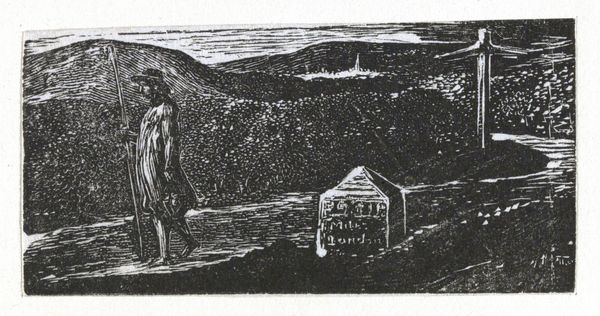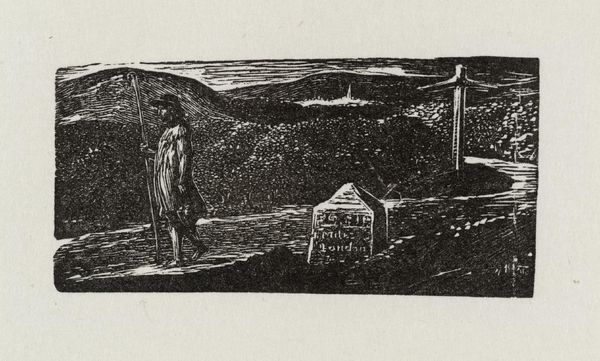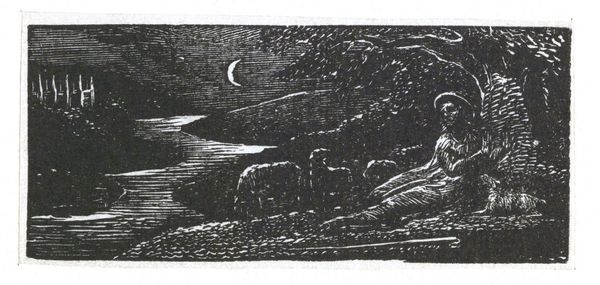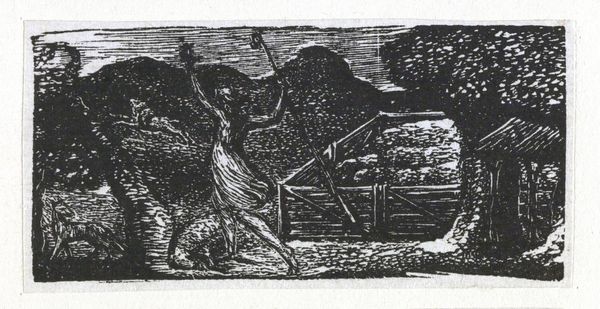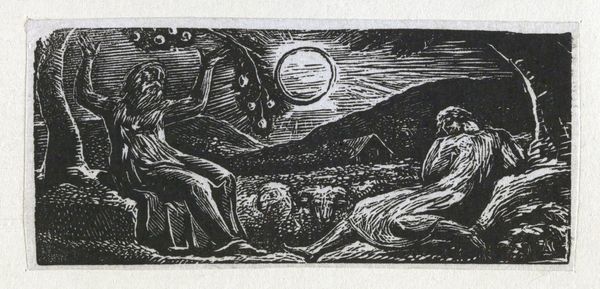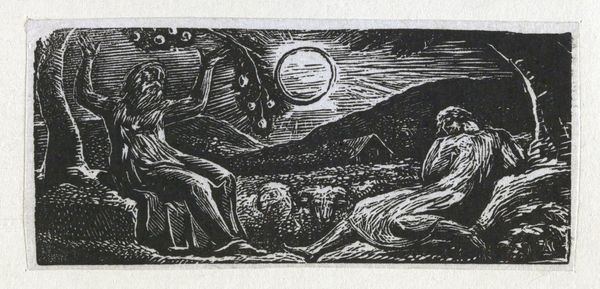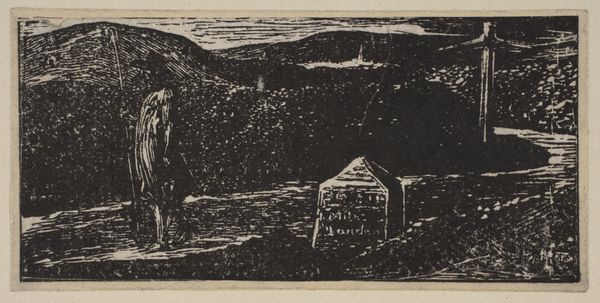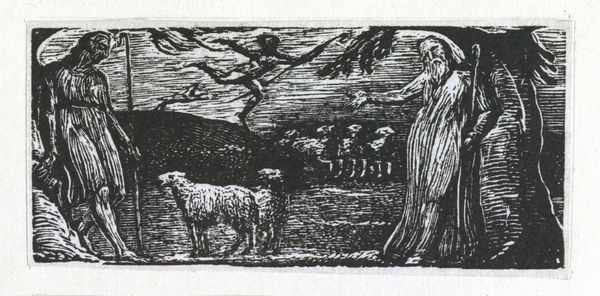
Dimensions: image: 37 x 74 mm
Copyright: CC-BY-NC-ND 4.0 DEED, Photo: Tate
Curator: Ah, yes, William Blake's wood engraving, 'Colinet’s ‘Fond Desire Strange Lands to Know’’, a small but powerful piece held here at the Tate. What strikes you first about it? Editor: That stark contrast—it’s like a dreamscape rendered in charcoal. The figure looks so solitary, almost swallowed by the immensity of the landscape. Curator: Indeed. Look at how Blake uses the contrasting black and white spaces to evoke a journey, a yearning. The milestone marker and distant city are heavy with symbolic weight. Editor: It speaks to a very old idea, doesn't it? The road as a symbol of life itself, full of choices and potential. The figure with their staff, a universal symbol of journeying. Curator: And Blake, ever the mystic, uses that universal language to whisper about our own desires for the unknown, those faraway lands that beckon. Editor: It's the human condition, really. A tiny figure, walking a path that leads to a hazy future, driven by some deep-seated longing. Well, that's certainly food for thought. Curator: Yes, and perhaps a reminder that the journey itself holds just as much significance as the destination.
Comments
tate 8 months ago
⋮
http://www.tate.org.uk/art/artworks/blake-colinets-fond-desire-strange-lands-to-know-a00119
Join the conversation
Join millions of artists and users on Artera today and experience the ultimate creative platform.
tate 8 months ago
⋮
Samuel Palmer was the most important of Blake’s followers, known as the Ancients. Palmer first met Blake in 1824. He described these illustrations to an imitation of the First Eclogue by the Roman poet Virgil as ‘visions of little dells, and nooks, and corners of Paradise’. Palmer’s art was particularly influenced by them. These prints appealed to the Ancients because they were the result of Blake’s experiments with a new medium; he had never engraved on wood before. Even at the age of sixty-four he wanted to make further explorations in his art. Gallery label, August 2004
